In the United States, more than 2.8 million antimicrobial-resistant infections occur each year, resulting in more than 35,000 annual deaths. Some antibacterial and antifungal pesticides used in agriculture as well as some pesticides used in other settings, belong to the same class as or share mechanisms of action with medically important antimicrobial drugs used in human and veterinary medicine. As new pesticides and uses are proposed, the potential exists for these pesticides to select for pathogenic bacteria or fungi that are resistant to medically important antimicrobial drugs, including both FDA-approved drugs and those still undergoing clinical trials.
The Environmental Protection Agency (EPA) is soliciting public comment on the concept for developing a framework to improve assessments of potential risks to human and animal health where the use of certain pesticides could potentially result in antimicrobial resistance (AMR) that compromises the effectiveness of medically important antibacterial and antifungal drugs. EPA is also seeking feedback on research gaps and other information to help inform the risk assessment and mitigation processes.
The concept document was developed in collaboration with the U.S. Department of Health and Human Services (HHS), the U.S. Department of Agriculture (USDA), and offices within the White House Executive Office of the President. A pesticide must be registered with the EPA under the Federal Insecticide, Fungicide, and Rodenticide Act (FIFRA) before it can be legally sold or distributed in the United States. During the registration process, EPA considers whether the pesticide will cause unreasonable adverse effects on people or the environment. Because resistance is considered an adverse effect under FIFRA, the U.S. government is working to develop a structured and coordinated approach to assess and manage these risks.
Example questions include:
- Is the concept for the proposed framework appropriately defined and clear to stakeholders?
- Are there specific types of pesticides that should be evaluated under the framework, either by class or function?
- What factors that should be considered in determining if a proposed pesticide use constitutes a potential risk to human or animal health due to AMR?
- How to determine which human and animal antimicrobial drugs should be considered `medically important’ and how should this term be defined?
- What mitigation strategies are currently available to address the risk of AMR developing because of pesticide use?
- How do organisms that might have developed resistance by exposure to these pesticides come into contact with and cause illness in humans or animals?
- Which human or animal populations are most affected (e.g., agricultural workers, persons handling compost, persons with immunocompromising conditions, persons living near treated fields, animals for food production, companion animals)?
- What are effective strategies to reduce the potential for these pesticides to select for antimicrobial-resistant bacteria and fungi?
- By which mechanisms do human or animal pathogenic bacteria and fungi spread through populations after becoming resistant through selection by these pesticides?
- What are the best approaches to determine the potential for pesticides to select for antimicrobial-resistant pathogens, and do chemical criteria exist that could help determine whether pesticides are more or less likely to pose health risks to humans or animals?
Submit your comments on or before November 13, 2023.


